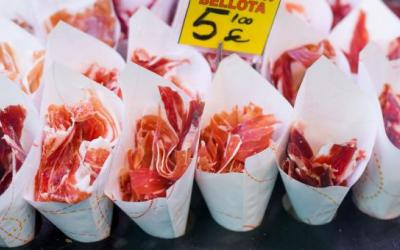EU pig production up 2% last year

The EU market produced 23.4 million tons of pork, but in some countries there are signs of a decrease in the number of pigs.
EU pig producers ended 2021 with a 2% increase in production, reaching a total of 23.4 million tonnes of pork. Trade slowed down in the second half of the year, mainly with CHINA. Production fell in Germany (-3%) year-on-year, remained stable in Poland and France, but rose in the Netherlands (+3%), Denmark (+8%) and Spain (+4%). This has given Spain the number one pork production in Europe with a production of 5.2 million tonnes, most of which is exported, with China a very important market. By 2022, however, Spain must look to other EXPORT markets around the world as China has announced that it will be self-sufficient in pork this year.
“We should be wary that the current spike in EU hog prices may not be long-lived. Although the EU pig herd declined year-on-year in December, much of the fall was in heavier pigs, with relatively smaller declines in the youngest piglets. It is also believed that some pigs are being held by pig farmers in anticipation of higher prices, further reducing current supplies by delaying slaughter. If reports of good supply of pork to the EU market are also correct, these factors together will mean future weakness in EU pork prices,” said Duncan Wyatt, AHDB Lead Analyst.
However, on the other hand, the increase in demand in 2021 as a whole is likely to be sustainable and could go a long way in absorbing products that until recently were destined for China . To do this, it is enough for demand in the EU to return to the levels observed at the beginning of 2019. The European market has consumed this product before and may do so again, although one must be aware of the widespread price increases and consumer willingness to pay. According to the expert, reports so far show that higher hog prices and other higher supply chain costs are not yet holding back pork sales.
Read together with it:
- Изменения в экспортном совете Воронежской области: новые участники и исключенияИз совета исключены несколько фигур, включая бывшего министра предпринимательства Геннадия Швыркова, обвиняемого в мошенничестве. «Агроэко» впервые экспортировала свою продукцию в 2020 году и в 2023 году отправила 15 тыс. тонн свинины, удвоив объем до 30 тыс. тонн в 2024 году. Компания «ЭкоНива» экспортировала в 2......
- Уругвай намерен возобновить экспорт мяса в МексикуОб этом глава министерства заявил в интервью агентству EFE после поездки в страну, на которую в 2024 году пришлось 3% экспорта уругвайских товаров, где он провел встречи с представителями различных органов власти в Мехико, Агуаскальентесе и Керетаро. Фратти объясняет, что «никогда не было очень значительной торговли» уругвайским мясом с Мексикой, но напоминает, что в последние годы проводились нек...
- "Истинный полешук" Русый рассказал, как нарушил стиль работы на совещании у ПрезидентаМихаил Русый 18 ноября, Минск. Александр Лукашенко 18 ноября собрал совещание по темам развития районов Припятского Полесья и реализации соответствующей программы. Основным докладчиком на мероприятии выступил Михаил Русый - "истинный полешук", как назвал его Президент, уполномоченный представитель главы государства в Брестской области и председатель Постоянной комиссии по законодательству и госуда...
- Ученые Беларуси разработали новый ветеринарный препарат для лечения заболеваний крупного рогатого скотаНовый препарат, названный «Антипестивир-ВД», стал первым противовирусным средством на рынке, эффективным против болезней слизистых у коров, включая скрытые формы инфекции. В состав препарата входят компоненты, произведенные из местного сырья, которые активируют иммунный ответ животного. На этапе клинических испытаний препарат продемонстрировал высокую эффективность: 63,3% животных выздоровели в те...
- Русый о программе развития Припятского Полесья: я готов голову заложить, все просчитано десятки раз18 ноября, Минск. Все показатели, предусмотренные программой развития Припятского Полесья, детально проверены, реалистичны и учитывают реальное положение дел. Об этом заявил Председатель Постоянной комиссии Совета Республики Национального собрания по законодательству и государственному строительству, уполномоченный представитель главы государства в Брестской области Михаил Русый у Президента Белар...
- Тамбовские аграрии собрали более 5 миллионов тонн сахарной свеклыПо оперативным данным, аграрии региона собрали более 5,3 миллиона тонн сахарной свеклы в физическом весе. Урожай убран с 81% свекловичных полей - 113 тысяч гектаров. Свыше 3,6 миллиона тонн отправлено на переработку на сахарные заводы. Всего в этом году планируется собрать свеклу со 140 тысяч гектаров полей. Самые большие площади сладких корней - в Мордовском, Знаменском, Кирсановском и Тамбовском...


























































